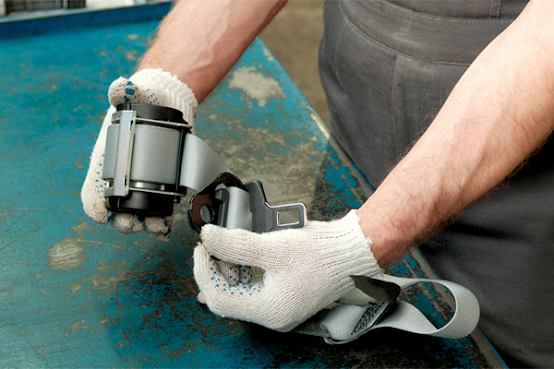How to Drive a Manual Transmission with a Broken Car Clutch
If you own or drive a car with a manual transmission, you are more likely to face an issue with your clutch. Even though the clutch pedal is sturdy, it will still wear off or break at the pivot, pedal arm or your clutch. Driving a car with a faulty clutch can cause further damage to your gearbox, starter motor or shifter. It is important to resolve any damage spotted with your clutch. However, it is still essential to know how to drive a car with no clutch.
What Causes a Clutch to Fail?
Clutches are considered to be one of the most troublesome components of manual cars. There are 5 common reasons behind the clutch failure. In order to increase your car’s life expectancy, it is crucial to know the reasons.
Stretched or Broken Cables: Clutch cables are connected to linkages. A tension is created when you press the pedal on the cable to pull the linkage. When you release the pedal, clutch reengage.
Worn-out Throwout Bearings: Throwout bearings move continually no matter whether the clutch is engaged or not. When the clutch is squeezed, the throwout bearing pushes the pressure plate away from the clutch circle to prevent power move from the motor to the transmission. It’s anything but a specific measure of oil and power to have the option to arrive at the pressure plate and set events into motions.
Leaky Cylinders: Hydraulic clutches need liquid to create pressure and function appropriately. Defective chambers lose liquid, so the clutch can’t develop sufficient pressure. Puddles under your vehicle or smells like burnt oil are signs that your master cylinder has started leaking.
Damaged Pressure Plates: Pressure plates append clutch circles to their flywheels. After a certain point of time, they will wear out and can’t apply sufficient strain to hold the clutch circle against the flywheel, so it turns uninhibitedly when it shouldn’t. If so, you may hear a squeaking sound or feel the clutch clatter a piece when you release it.
How to Drive a Car with No Clutch?
Option 1
When your car is equipped with a manual transmission and your clutch breaks, the first thing that becomes difficult to perform is starting your car. Modern cars with manual transmission have an ignition interlock that helps prevent your vehicle from starting in gear. Make sure your vehicle has no obstruction in front. If it is parked in a parking lot, push it into the lane for a clear path. Put your car’s transmission in the centre and neutral position while you sit in the driver’s seat. Ensure that someone is pushing your car into the lane while you steer. Do not apply the brake.
Put your gear shift in first gear and try to start your car. As soon as you turn the key, be ready to drive your vehicle. Your car’s engine will not turn on if the ignition interlock switch is associated with the clutch pedal. If your car doesn’t have an ignition interlock switch, it will move forward. Keep cranking your car till the engine starts. Make sure you do not crank it for more than 5 seconds at a time as it will damage your starter. Once the engine starts, drive your car slowly and carefully.
If you are unable to start your car in gear, try starting it in neutral. It is easy to start your manual transmission car if the gearshift is in a neutral position. It can take several tries to finally start your car successfully.
Option 2
It takes a little practice to upshift your car without a clutch. If you miss it on the first attempt, you can try it again. Few vehicles indicate a warning sign when you shift to the next highest gear. Try to simultaneously off the accelerator pedal and pull the shifter out forcefully of its current gear. Make sure you pull it out before it decelerates. Force the gearshift to the next highest immediately. If you are driving it in the first gear, force it onto the second one. Hold on to the gear position as the RPMs will start dropping until it slips in.
If this doesn’t work, retry the entire process again quickly!
Option 3
To decelerate the car to a stop, simply try pulling the shifter out of its current gear. Leave it in neutral and apply brakes. If you are planning on driving at a slower speed, downshift your transmission. This process will take a few seconds so do not hurry. Rev your car’s engine roughly and upshift to the next gear. After the process is done, release the accelerator pedal and gear shift into the next gear down.
However, if this process doesn’t work, try again. As soon as the gearshift engages, give it a little throttle for continuous and easy driving.
Driving a car with a faulty or no clutch can be difficult and harmful for your vehicle. It is important to know how to drive a car with no clutch. Make sure you get it fixed by your local mechanic to avoid any future problems. However, the process above mentioned should only be your last resort as it is very difficult to operate a vehicle without a proper clutch. Get your clutch inspected timely and repaired if necessary!.....( continue reading )







Comments
Post a Comment